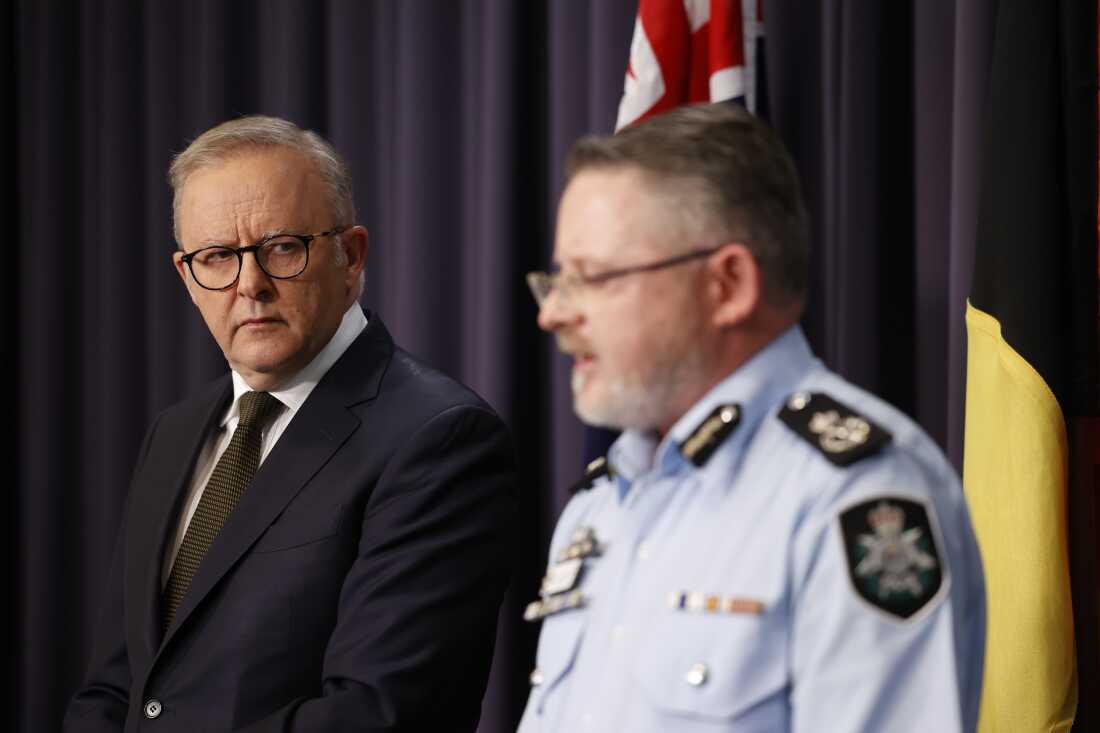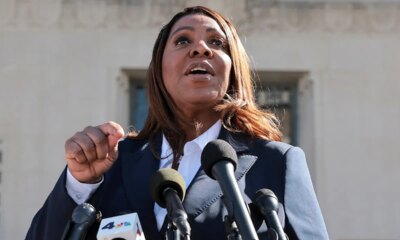News
Read the Justice Department’s Report

E. MPD Unnecessarily Escalates Encounters with Children.
We have serious concerns about MPD’s treatment of children and the lasting impact of
police encounters on their wellbeing and resilience. 42 During interactions with children
regarding minor issues, MPD officers escalate the encounters with aggressive and
demeaning language and, at times, needless force.
At times, MPD aggressively escalates encounters with children who have committed no
crime or where the child is a victim. In one incident, officers handcuffed and used force
against a 16-year-old Black girl who called MPD to report she had been assaulted.
Before arriving at the precinct to give a statement, officers handcuffed the girl after she
refused to give them her phone. When she became agitated and reactive, the officers
responded with insults and threats, telling her, “When [the handcuffs] do come off . . .
Ooh, I’m itching,” “I leave my gloves on when I fight,” and “If I gotta whip your ass, I will.”
After three hours, officers removed the handcuffs to reposition them. As she complained
that her hands were hurt and swollen and tried to move her wrists, the officers grabbed
her and pushed her face down onto the ground to handcuff her again. The girl was then
arrested and charged with disorderly conduct.
MPD has escalated interactions when enforcing laws that are intended to keep children
safe. After two Black boys (ages 15 and 16) ran from an officer who was citing them for
a curfew violation, officers demeaned the boys and threatened violence. When one boy
asked if they were going to jail, the officer responded, “If it’s my decision, hell yeah . . .
I’d have so much damn fun rolling your ass down to jail. I’d love doing that shit.” Another
officer threatened to assault the boys when he worried that he may have lost his MPD
mobile device during the foot pursuit: “I am fucking these little kids up, man… I am
fucking you all up, I just wanted to let y’all know that.”
MPD officers have mistreated children in crisis, even when it is clear the child has
significant disabilities. In one incident, a CIT officer threatened to take a 14-year-old
Black boy to adult jail because the boy ran away from home. The boy was diagnosed
with autism, ADHD, bipolar disorder, and developmental delays and had the intellectual
functioning of a four-year-old. The boy’s mother had called the police after the boy, who
had been released from a mental health facility that day, got upset at bedtime, threw a
garbage can and a chair, and ran from home. After the boy was found, a CIT officer
raised his Taser toward the boy, who was calm and compliant, and told him, “I don’t
want to use it on you, but if you don’t listen to me, I can.” Officers planned to take the
boy to the hospital for psychiatric treatment. But the CIT officer continued to threaten
him, saying that he would take the child to jail “with the big boys,” and “If I have to come
42 Interactions with the police can lead to damaging and lasting outcomes for children, especially Black
and Latinx teens, including post-traumatic stress, increased levels of depression, diminished academic
performance, and increased chances that a child will engage in delinquent behavior in the future.
56

News
Australia announces strict new gun laws. Here’s how it can act so swiftly

Mourners gather at the Bondi Pavilion as people pay tribute to the victims of a mass shooting at Bondi Beach.
Izhar Khan/Getty Images
hide caption
toggle caption
Izhar Khan/Getty Images
At least 15 people were killed at a beach in Sydney, Australia, on Sunday when a father and son opened fire on a crowd celebrating the beginning of Hanukkah. At least 42 people were hospitalized.
Prime Minister Anthony Albanese described the shooting as a “terrorist incident” targeting Jewish Australians.

Mass shootings are rare in Australia, which has historically strict gun laws. But Sunday’s deadly massacre has prompted Albanese and other Australian officials to revisit those laws and call for further restrictions to prevent more mass shootings in the future.
Here’s what Australian officials are proposing, and why the country’s politics and culture might allow for it.
Australia already has strict gun laws
The origin of Australia’s notoriously strict gun laws dates back to 1996, when a gunman killed 35 people in an attack in Tasmania.
The April 28 mass shooting came to be known as the Port Arthur massacre, and almost immediately the bloodshed prompted Australia’s political leaders to unite behind an effort to tighten the country’s gun laws. That effort was led by conservative prime minister John Howard.
The result was the National Firearms Agreement, which restricted the sale of semi-automatic rifles and pump-action shotguns and established a national buyback program that resulted in the surrender of more than 650,000 guns, according to the National Museum of Australia. Importantly, it also unified Australia’s previously disjointed firearms laws — which had differed among the states and territories before 1996 — into a national scheme, according to the museum.

Guns handed into Victoria Police in Australia in 2017 as part of a round of weapons amnesty.
Robert Cianflone/Getty Images
hide caption
toggle caption
Robert Cianflone/Getty Images
The agreement has been cited internationally, including by the likes of former President Barack Obama, as a model for greater gun control and is credited with dramatically reducing firearms deaths in Australia. The country had zero mass shootings in the more than two decades that followed the agreement, one paper found.
Albanese said in a press conference Monday that the “Howard government’s gun laws have made an enormous difference in Australia and are a proud moment of reform, quite rightly, achieved across the parliament with bipartisan support.”
But Australian firearm ownership has been on the rise again in recent years. The public policy research group The Australia Institute wrote in a January report that there were more than 4 million guns in the country, which is 25% higher than the number of firearms there in 1996. Certain provisions of the National Firearms Agreement have been inconsistently implemented and in some cases “watered down,” the group said.
Graham Park, president of Shooters Union Australia, told supporters in a member update over the summer that Australian firearms owners are “actually winning,” The Guardian reported.
What the proposed gun measures will do
The prime minister and regional Australian leaders agreed in a meeting on Monday to work toward even stronger gun measures in response to Sunday’s shooting. Here’s what they include:
- Renegotiate the National Firearms Agreement, which was enacted in 1996 and established Australia’s restrictive gun laws.
- Speed up the establishment of the National Firearms Register, an idea devised by the National Cabinet in 2023 to create a countrywide database of firearms owners and licenses.
- Use more “criminal intelligence” in the firearms licensing process.
- Limit the number of guns one person can own.
- Limit the types of guns and modifications that are legal.
- Only Australian citizens can hold a firearms license.
- Introduce further customs restrictions on guns and related equipment. The Australian government could limit imports of items involving 3D printing or accessories that hold large amounts of ammunition.
Albanese and the regional leaders also reaffirmed their commitment to Australia’s national firearms amnesty program, which lets people turn in unregistered firearms without legal penalties.
While not specifically referenced by the National Cabinet, some of the proposals address details related to Sunday’s shooting.

Australia’s prime minister, Anthony Albanese, (left) at Parliament House with AFP Acting Deputy Commissioner for National Security Nigel Ryan speak after the Bondi Beach shooting.
Hilary Wardhaugh/Getty Images
hide caption
toggle caption
Hilary Wardhaugh/Getty Images
Albanese said Monday the son came to the attention of the Australian Security Intelligence Organisation in 2019. ABC Australia reported that he was examined for his close ties to an Islamic State terrorism cell based in Sydney.
Minister for Home Affairs Tony Burke said the son is an Australian-born citizen. Burke added that the father arrived in Australia on a student visa in 1998, which was transferred to a partner visa in 2001. He was most recently on a “resident return” visa.
How Australia’s political system enables swift legal changes
Part of the reason Australia’s government can act so quickly on political matters of national importance is because of something called the National Cabinet.
The National Cabinet is composed of the prime minister and the premiers and chief ministers of Australia’s six states and two territories.
It was first established in early 2020 as a way for Australia to coordinate its national response to the COVID-19 pandemic. Since then, the group has convened to discuss a number of national issues, from a rise in antisemitic hate crimes to proposed age restrictions on social media use.
The National Cabinet doesn’t make laws, but its members attempt to agree on a set of strategies or priorities and work with their respective parliaments to put them into practice.
Australians wanted stronger gun laws even before Sunday
Gun control efforts in Australia inevitably draw comparisons to the U.S., where the Second Amendment dominates any discussion about firearms restrictions.
John Howard, the prime minister during the Port Arthur massacre, said in a 2016 interview with ABC Australia that observing American culture led him to conclude that “the ready availability of guns inevitably led to massacres.” He added: “It just seemed that at some point Australia ought to try and do something so as not to go down the American path.”

In fact, the National Firearms Agreement avows that gun ownership and use is “a privilege that is conditional on the overriding need to ensure public safety.”
Robust gun laws remain popular among Australians today. A January poll by The Australia Institute found that 64% of Australians think the country’s gun laws should be strengthened, while just 6% believe they should be rolled back. That is in a country where compulsory voting means that politics “generally gravitates to the centre inhibiting the trend towards polarisation and grievance politics so powerfully evident in other parts of the globe,” Monash University politics professor Paul Strangio wrote last year.
Now, there are renewed calls to further harden Australia’s gun laws in the wake of Sunday’s deadly shooting.

“After Port Arthur, Australia made a collective commitment to put community safety first, and that commitment remains as important today as ever,” Walter Mikac said in a statement on Monday.
Mikac is founding patron of the Alannah & Madeline Foundation, which is named for his two daughters who were killed in the 1996 shooting. His wife, Nanette, was also killed.
“This is a horrific reminder of the need to stay vigilant against violence, and of the importance of ensuring our gun laws continue to protect the safety of all Australians,” Mikac added.
News
Video: Rob Reiner and His Wife Are Found Dead in Their Los Angeles Home

new video loaded: Rob Reiner and His Wife Are Found Dead in Their Los Angeles Home
transcript
transcript
Rob Reiner and His Wife Are Found Dead in Their Los Angeles Home
The Los Angeles Police Department was investigating what it described as “an apparent homicide” after the director Rob Reiner and his wife, Michele, were found dead in their home.
-
“One louder.” “Why don’t you just make 10 louder and make 10 be the top number and make that a little louder?”

By Axel Boada
December 15, 2025
News
BBC Verify: Videos show impact of mass drone attacks launched by Ukraine and Russia

How has the UK government performed against its key pledges?published at 11:18 GMT
Ben Chu
BBC Verify policy and analysis correspondent
Around a year ago Prime Minister Keir Starmer launched his “Plan for Change” setting out targets he said would be met by the end of this Parliament in 2029.
So ahead of Starmer being questioned by senior MPs on the House of Commons Liaison Committee this afternoon, I’ve taken a look at how the government has been performing on three key goals.
House building
The government said it would deliver 1.5 million net additional homes in England over the parliament.
That would imply around 300,000 a year on average, but we’re currently running at just over 200,000 a year.
Ministers say they are going to ramp up to the 1.5 million target in the later years of the parliament – however, the delivery rate so far is down on the final years of the last Conservative government.
Health
The government has promised that 92% of patients in England will be seen within 18 weeks.
At the moment around 62% are – but there are signs of a slight pick up over the past year.
Living standards
The government pledged to grow real household disposable income per person – roughly what’s left after taxes, benefits and inflation.
There has been some movement on this measure with the Office for Budget Responsibility forecasting 0.5% growth in living standards on average a year.
However that would still make it the second weakest Parliament since the 1970s. The worst was under the previous Conservative government between 2019 and 2024 when living standards declined.
-

 Alaska1 week ago
Alaska1 week agoHowling Mat-Su winds leave thousands without power
-

 Texas1 week ago
Texas1 week agoTexas Tech football vs BYU live updates, start time, TV channel for Big 12 title
-

 Washington6 days ago
Washington6 days agoLIVE UPDATES: Mudslide, road closures across Western Washington
-

 Iowa1 week ago
Iowa1 week agoMatt Campbell reportedly bringing longtime Iowa State staffer to Penn State as 1st hire
-

 Iowa2 days ago
Iowa2 days agoHow much snow did Iowa get? See Iowa’s latest snowfall totals
-

 Miami, FL1 week ago
Miami, FL1 week agoUrban Meyer, Brady Quinn get in heated exchange during Alabama, Notre Dame, Miami CFP discussion
-

 Cleveland, OH1 week ago
Cleveland, OH1 week agoMan shot, killed at downtown Cleveland nightclub: EMS
-
World1 week ago
Chiefs’ offensive line woes deepen as Wanya Morris exits with knee injury against Texans






















